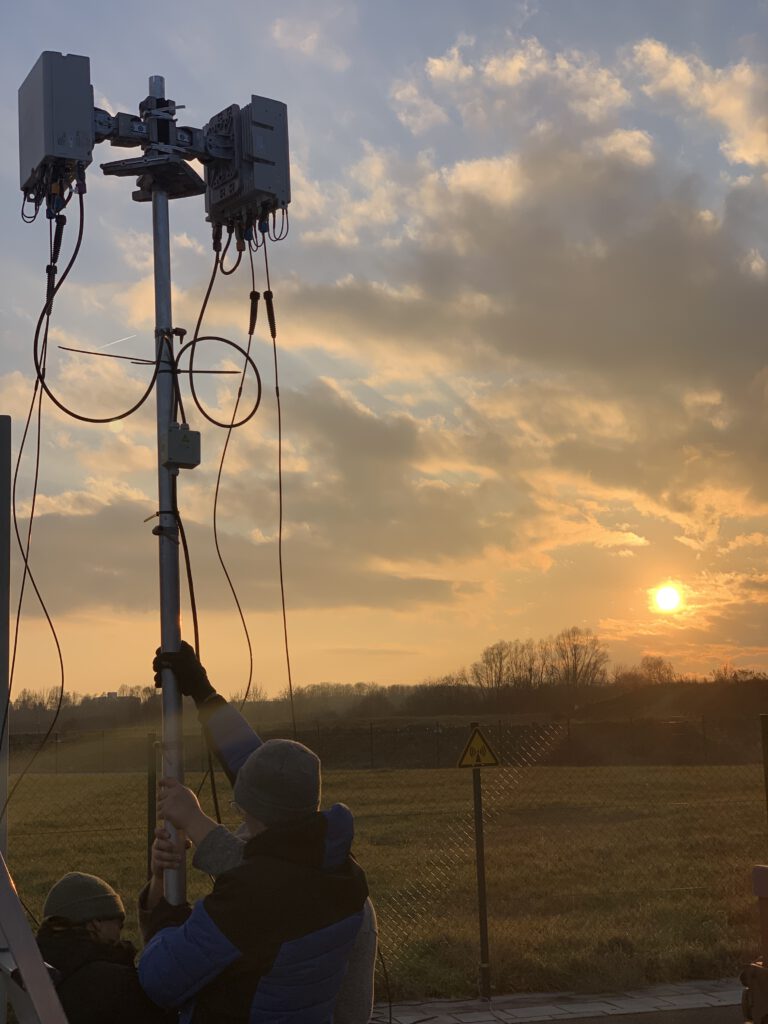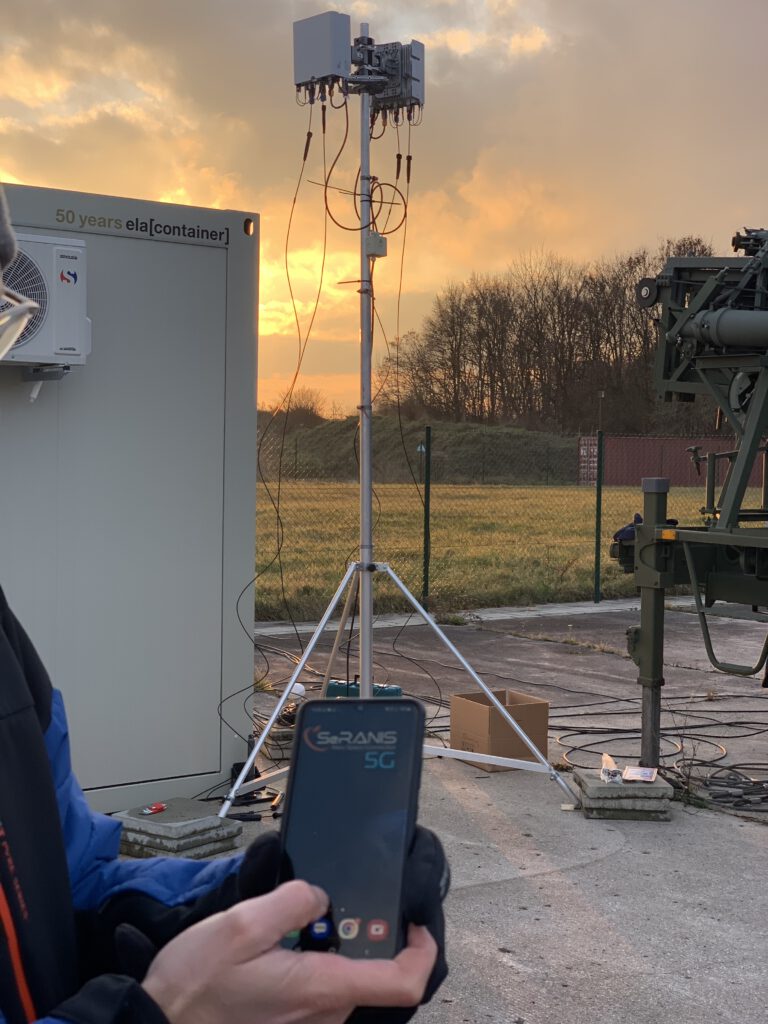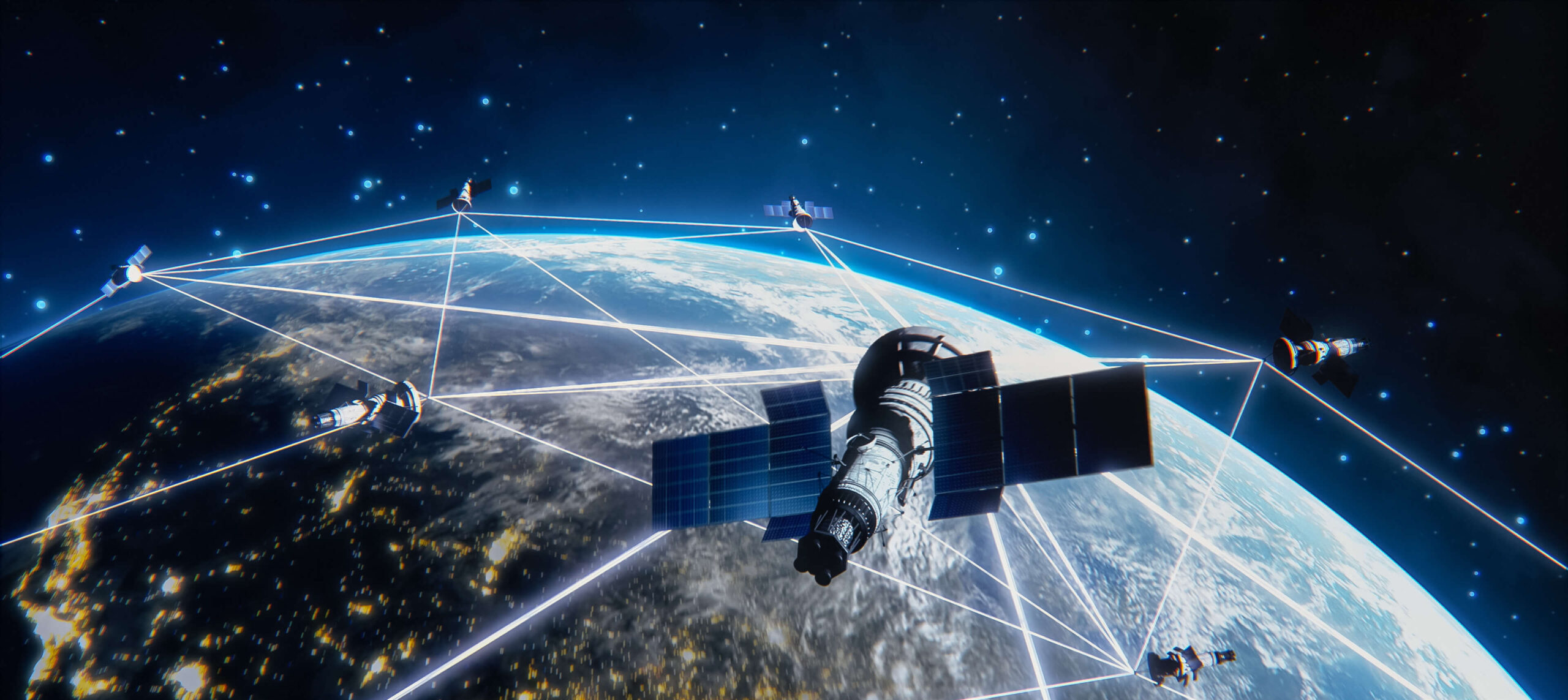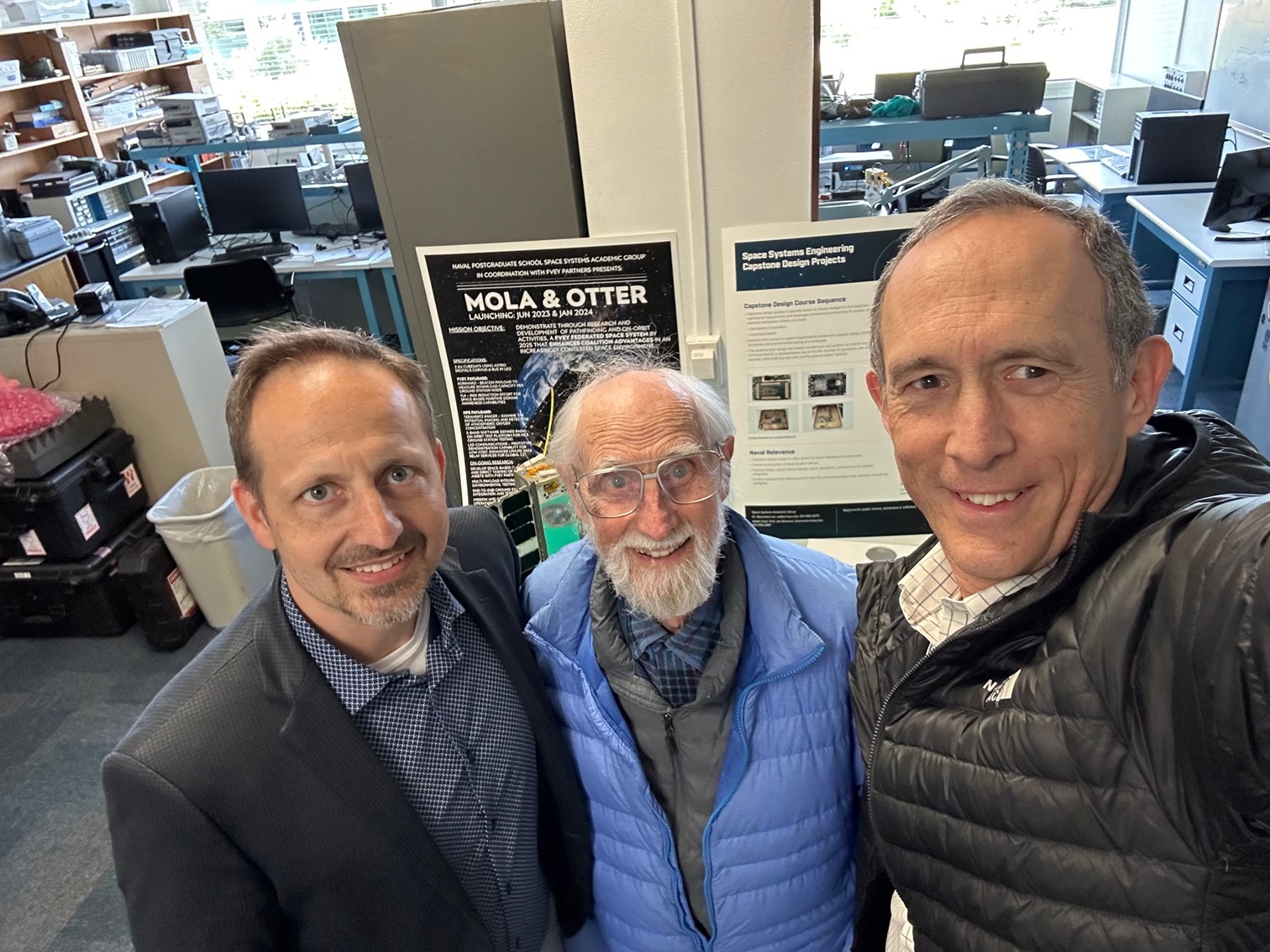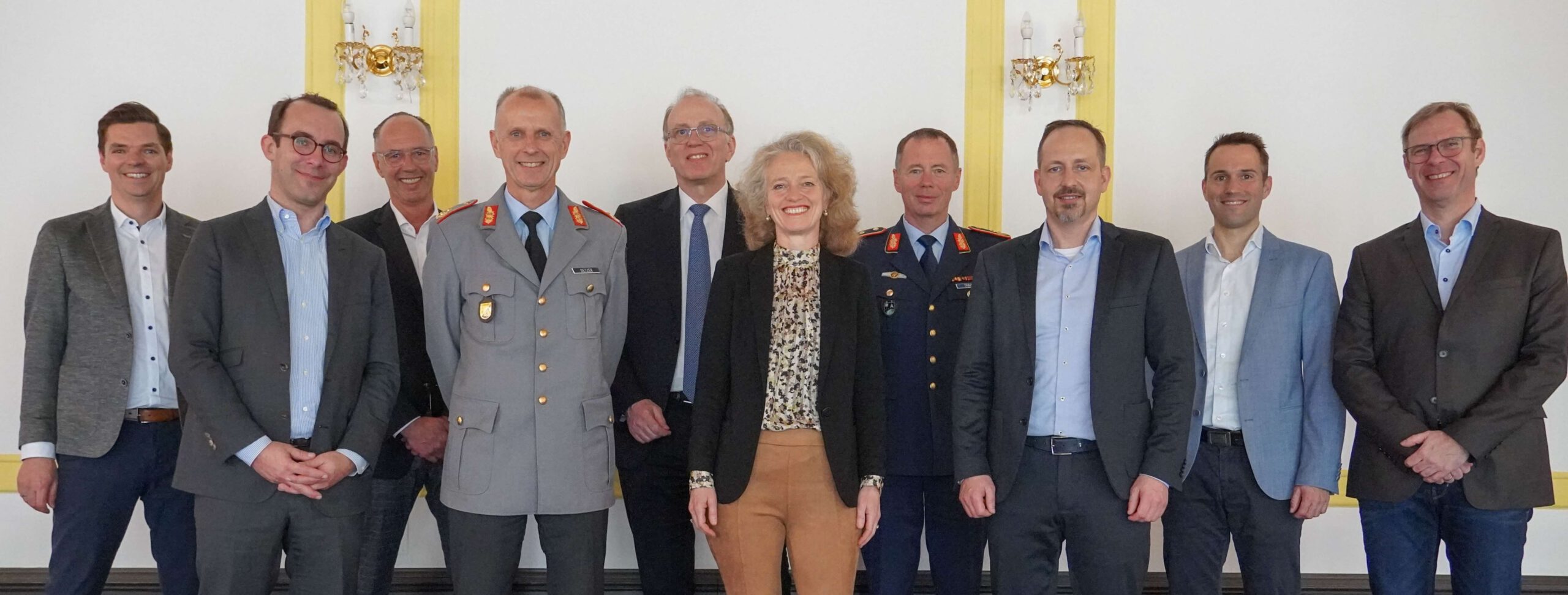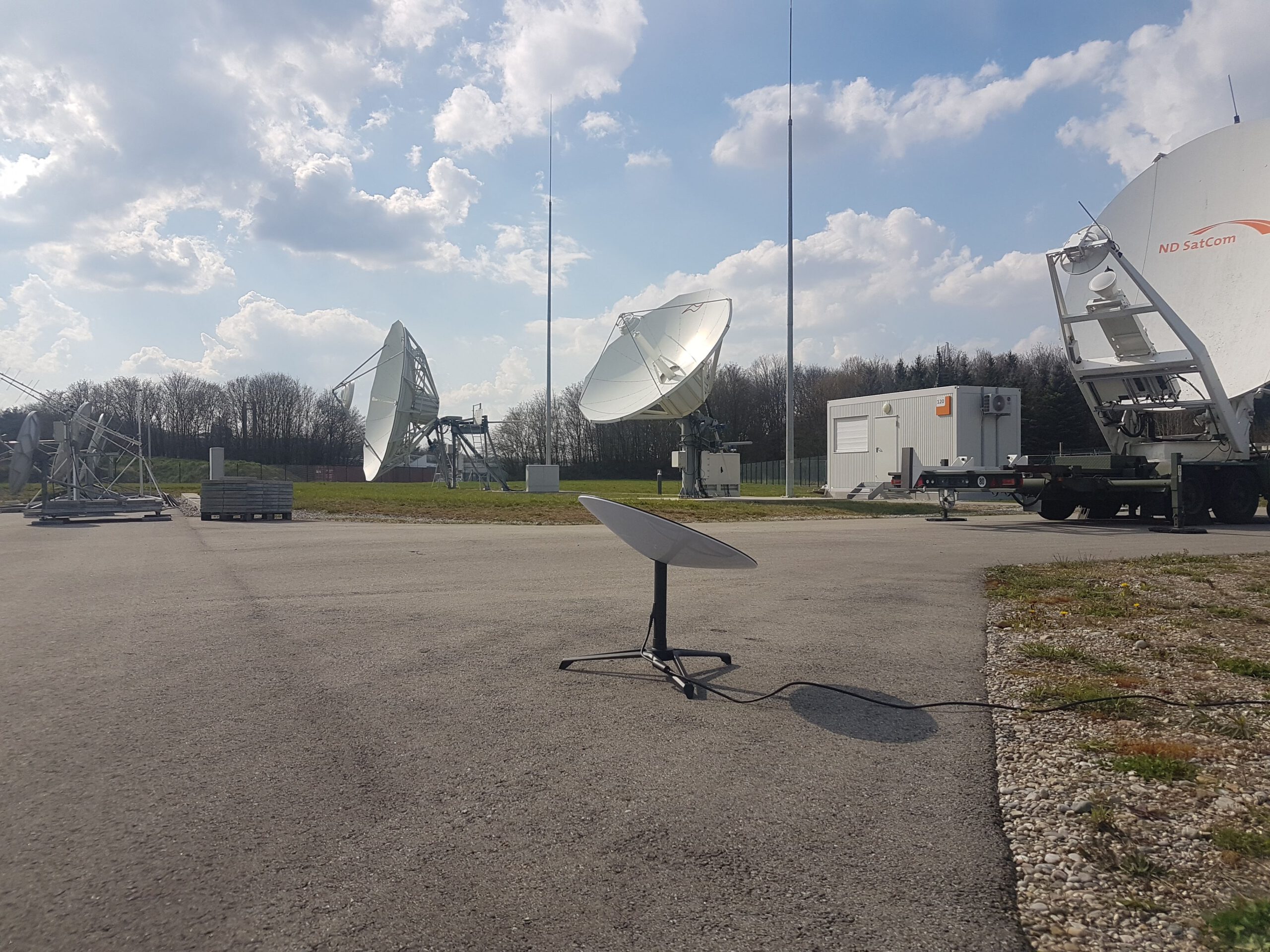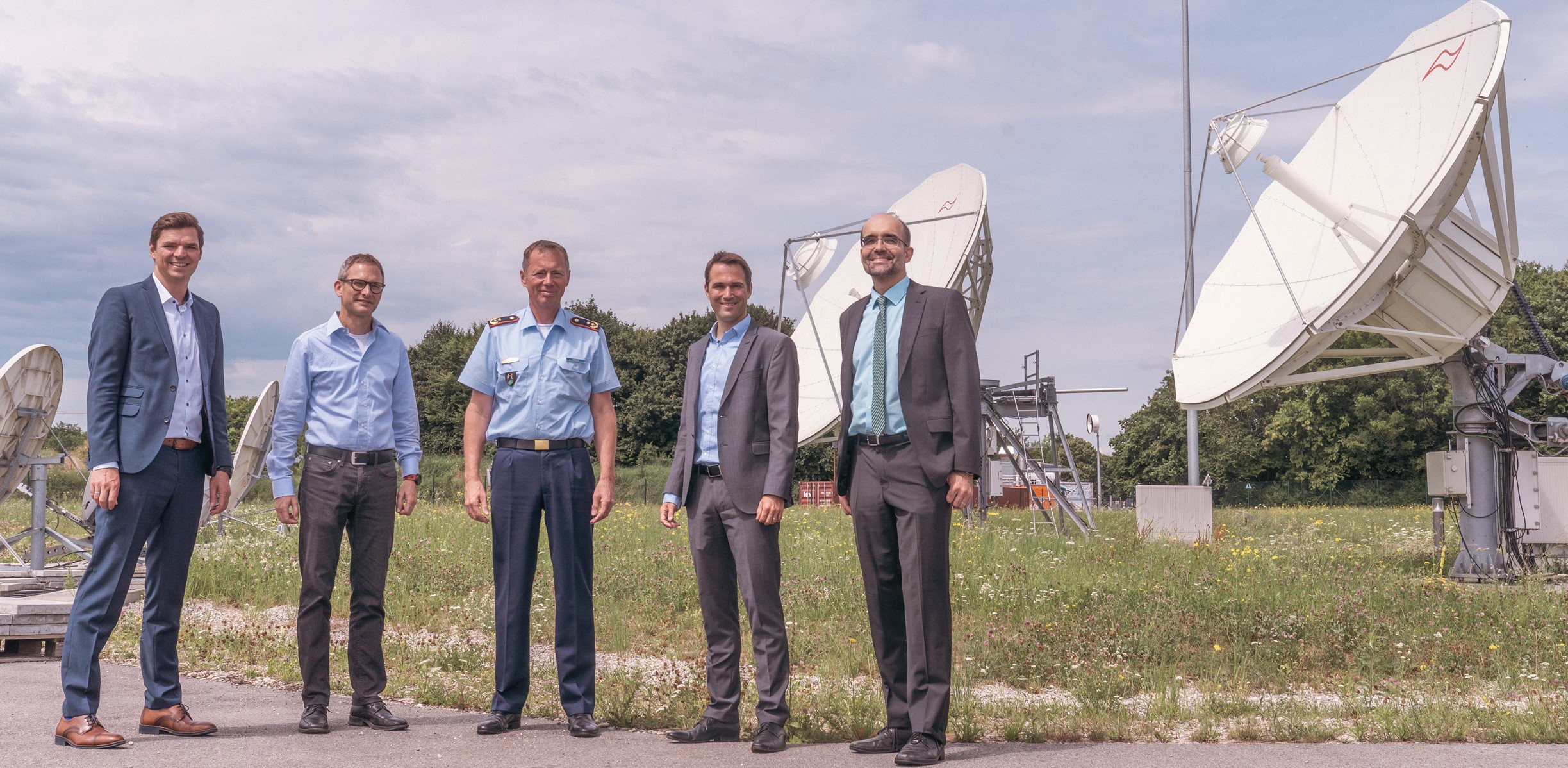Shortly before Christmas 2022, the time had come. The hardware and software components for the campus’ own 5G research network were delivered. A great day for our 5G research groups around Florian Völk and Prof. Dr Petra Weitkemper.
The first section of the network was immediately put into operation, which is to extend over the entire campus piece by piece over the course of the year.
“The university campus is particularly suitable for this,” explains Florian Völk, “because it has a diverse and realistic building structure. On the campus, for example, there are areas with urban buildings as well as areas with rural characteristics ranging from open spaces to places with heavy tree cover. This allows for particularly realistic measurements.
In addition, the campus has a research ground station for satellite communication that is unique in Europe.
During the overall SeRANIS project, this will be equipped with a laser communication terminal, which will then extend the 5G network into space in combination with the SeRANIS satellite Athene 1.
The aim of the project is to create an integrated terrestrial and non-terrestrial network. In combination, this unique test network will then enable research into the next evolutionary stage of the 6G mobile communications standard and demonstrate what the network could look like in 10 years’ time.
In addition to SeRANIS, other projects also benefit from the infrastructure. For example, the specially operated automotive test track is completely covered and thus enables measurements with autonomous vehicles, and the quantum computing project MuQaNet can also test the exchange of quantum keys via the network.
